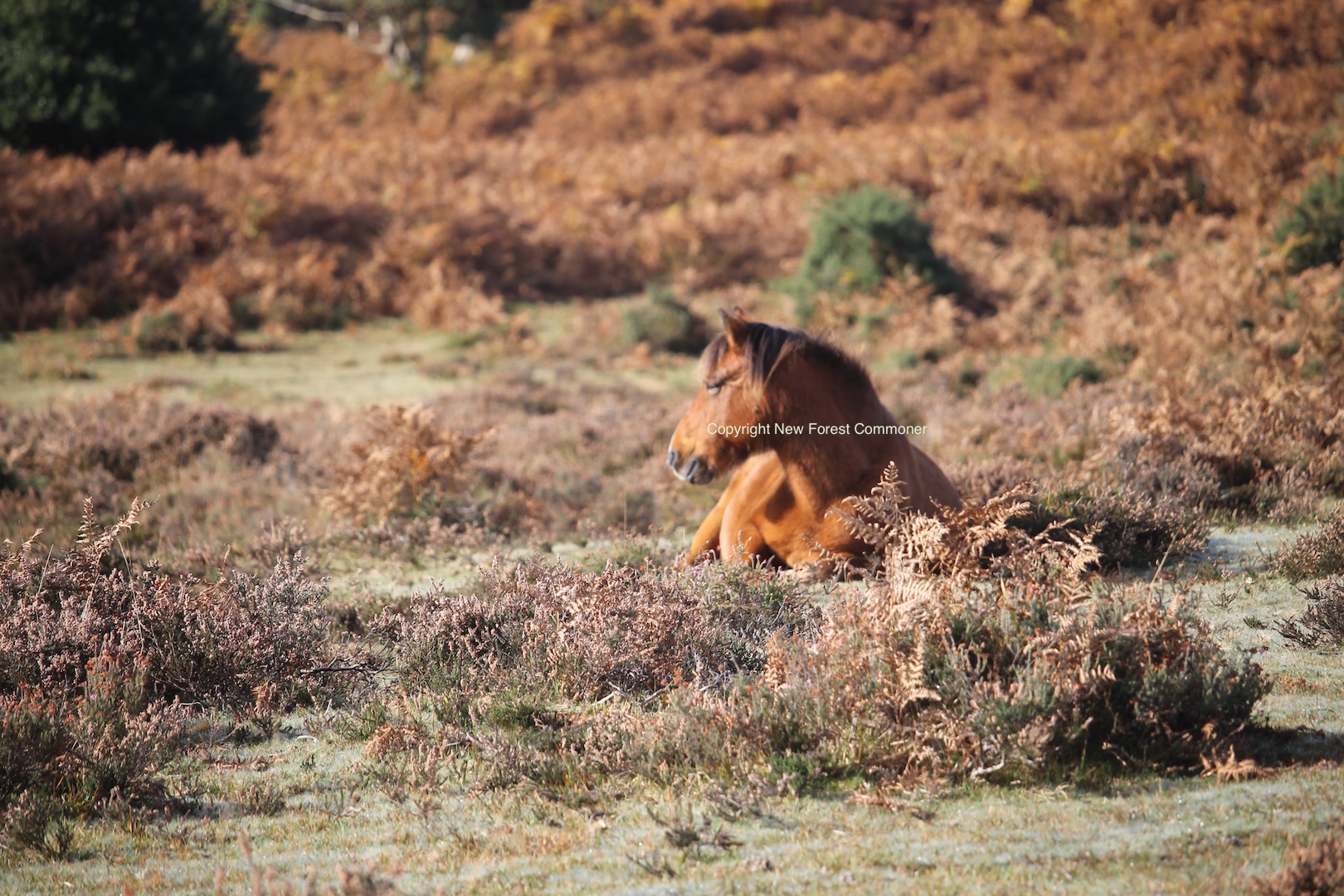
The ponies are well-adapted to living on the New Forest, which includes good camouflage.
The New Forest has taken on a completely different look and feel since the onset of late autumn. Many of the birds that were regularly encountered over the summer months have, like the tourists, migrated elsewhere. The atmosphere is tranquil as I go out in search of my free-roaming ponies, to find and check on them. Only the weather shows signs of turbulence and disquiet at times. The landscape is beginning to reveal itself under the wilting bracken and the hues of umber that stretch away into the distance are broken up by the skeletal frames of the trees, stands of holly and the irregular clumps of gorse. The New Forest is a stunning even in the bleak midwinter. It is getting much easier to spot the ponies though, without the dense tree canopies that shielded them from the summer sun. Even the fallow deer are more visible. The rutting season is over and the fawns will have all been weaned by now, which means that the adults can turn their minds to fattening up for the winter. Their spotted chestnut-coloured coats are swapped for plain brown-grey in the winter. They stay together in herds and will forage for acorns and beech mast amongst the leaf litter on the forest floor. When you see one deer you can be certain that there are others nearby. This also applies to the ponies. Being herd animals if you can find one then the others will not be far away.
Ponies playing ‘hide and seek’
In a ‘wilderness’ setting for a prey species, such as ponies and deer, there is safety in numbers. The multiple sets of ears, noses and eyes that will be alert to danger. It also helps to be perfectly camouflaged against the terrain and sometimes it is only when they move that the pony, deer or even cow, can be seen. Every now and then though, I find myself going off to investigate what turns out to be a fallen tree that just for a moment resembled the familiar outline of an equine form. Its slick, bare trunk fleetingly reminiscent of the wet, shining coat of a bay pony; and was that the flick of a foal’s tail I saw? No. It was a strand of fallen ivy that twitched in the wind. It’s not an uncommon mistake to make, I’m told reassuringly. Are the ponies playing hide and seek with me? Apparently, one just has to keep trying. Yet some of my commoning friends have an almost uncanny ability to know where their ponies are. They seem to have a ‘pony-finding-gene’, which I can only surmise must have been passed down to them by their commoning parents along with the colour of their eyes and shapes of their faces. Such is their knowledge of the New Forest terrain, seasons, weather patterns and pony behaviour. It is little wonder then that some visitors to the Forest have observed an almost symbiotic relationship between the commoners and the Forest. Nevertheless, I have been assured that I too could accomplish a decent level of this understanding but not without a little practice, a lot of patience and a bit of trial and error.



You must be logged in to post a comment.